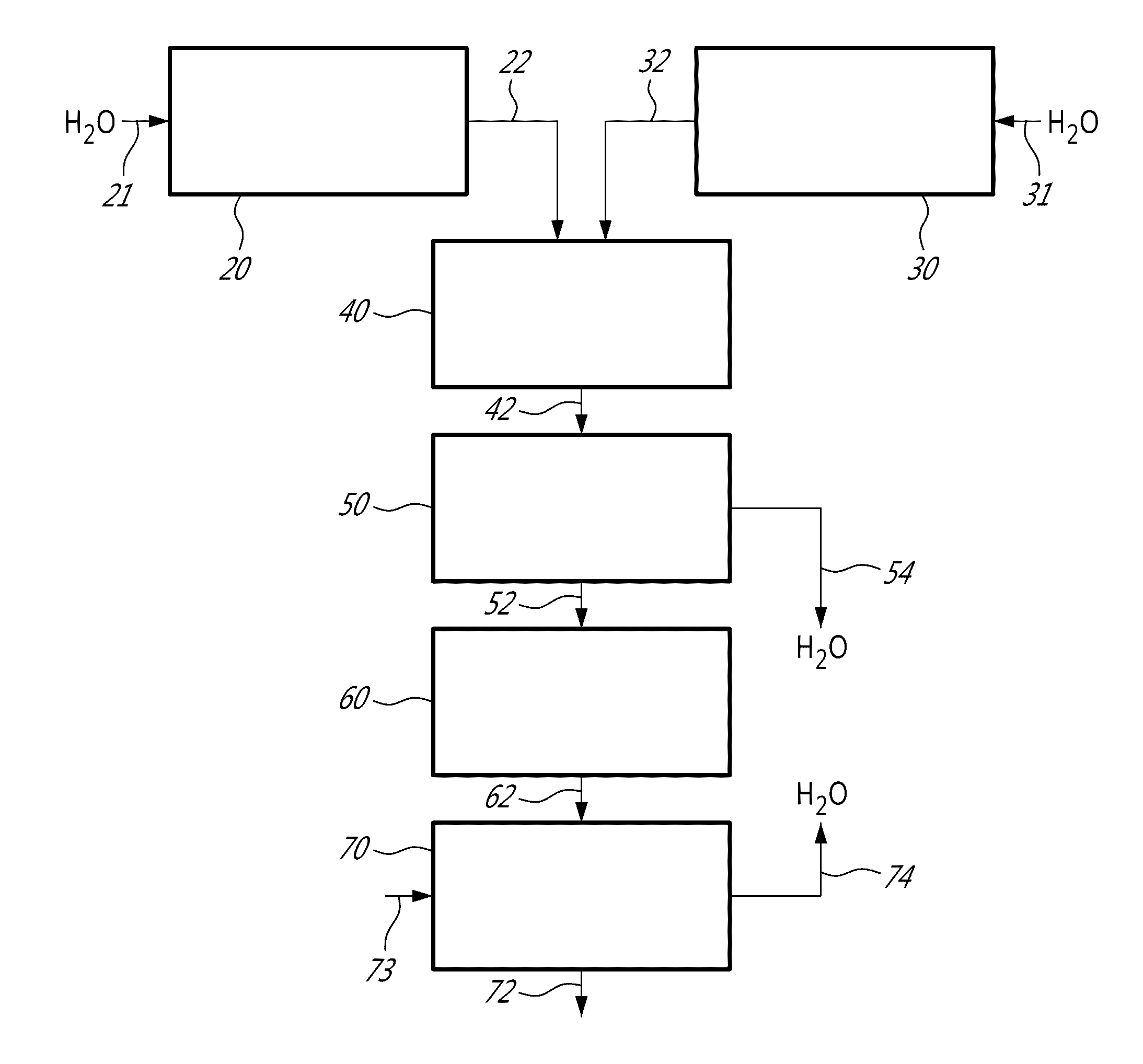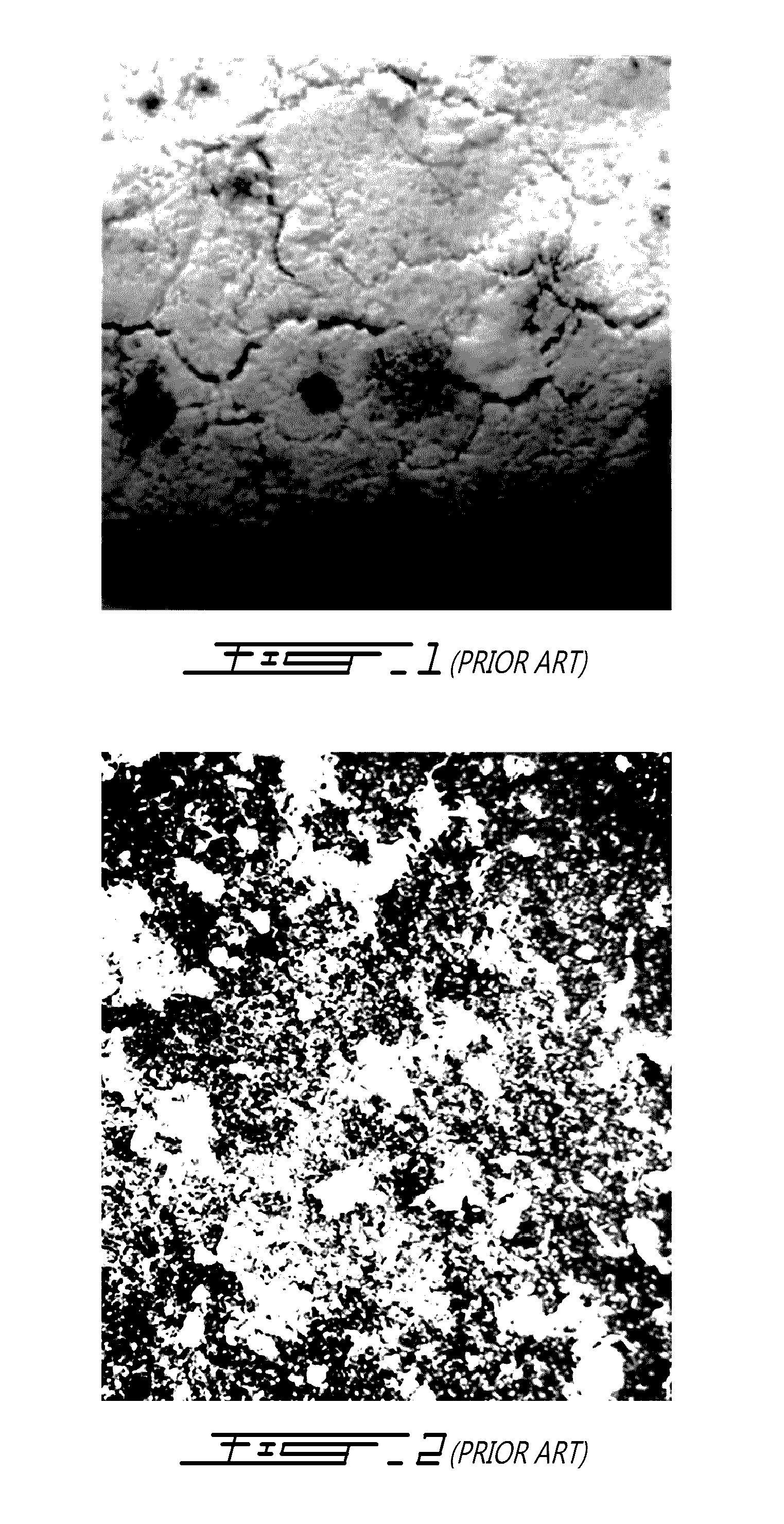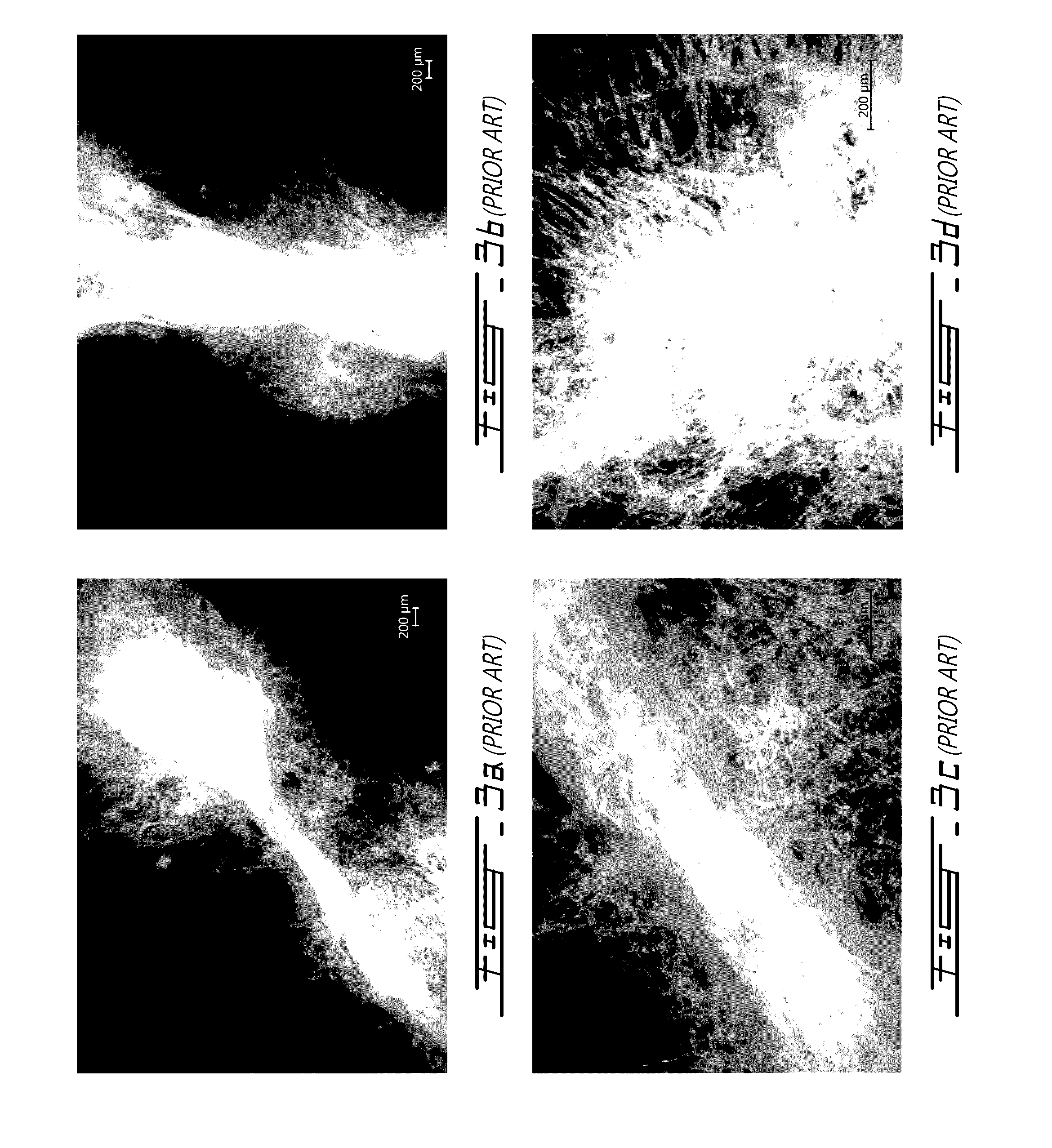Dry mixed re-dispersible cellulose filament/carrier product and the method of making the same
- Summary
- Abstract
- Description
- Claims
- Application Information
AI Technical Summary
Benefits of technology
Problems solved by technology
Method used
Image
Examples
example 1
Manufacturing Dry and Water Re-Dispersible Cellulose Filaments Carried by BCTMP at Pilot Scale
[0133]Cellulose filaments dried using conventional pulp drying methods are only partially re-dispersible in aqueous system and therefore loss its reinforcement power, when compared with never-dried cellulose filaments.
[0134]BCTMP pulp fibres were used as CF carrier during drying process to prevent hornification of cellulose filaments, which may also produce super BCTMP market pulp.
[0135]The objectives were to assess if BCTMP containing different proportions of CF can be dried by a conventional pulp flash dryer, to evaluate the re-dispersibility of flash dried CF / BCTMP, and to compare the performance of CF in dry CF / BCTMP with never-dried CF.
[0136]Cellulose filaments (CF) was prepared to have an average length of from about 200 μm to about 2 mm, an average width of from 30 nm to about 500 nm and an average aspect ratio of from about 200 to about 5000 produced from a bleached softwood kraft p...
example 2
Manufacturing Dry and Water Re-Dispersible Cellulose Filaments Carried by NBSK at Pilot Scale
[0148]NBSK pulp fibres were used as CF carrier during drying process to prevent hornification of cellulose filaments, which may also produce super NBSK market pulp.
[0149]The objectives were to assess if NBSK containing different proportions of CF can be dried by a conventional pulp flash dryer, to evaluate the re-dispersibility of flash dried CF / NBSK, and to compare the performance of CF in dry CF / NBSK with never-dried CF.
[0150]Cellulose filaments used for this example and the procedure of making dry CF / NBSK are the same as in Example 1.
[0151]Table 4 presents the tensile strength of handsheets made from Dispersed Never-dried CF / NBSK (before flash drying) and Re-slushed Dried CF / NBSK (after flash drying). The results show that, when CF ratio less than 30%, tensile strength of Re-slushed Dried CF / NBSK was similar to that of Dispersed Never-dried CF / NBSK. On the other hand, when CF ratio beyond...
example 3
Comparison Re-Slushed Dried CF / NBSK with the Mixture of Dried CF and of Dried NBSK
[0155]The present example compares the performance of flash-dried CF / NBSK with the mixture of flash-dried CF and of flash-dried NBSK. Cellulose filaments used for this example and the procedure of making dry CF / NBSK, dry CF and dry NBSK in Example 1.
[0156]Table 7 presents the tensile strength of handsheets made from Re-slushed Dried CF / NBSK (after flash drying) and from the mixture of dried CF and of dried NBSK. The results show that the tensile strength of Re-slushed Dried CF / NBSK was much higher than those of the mixture of dried CF and of dried NBSK. FIG. 8 illustrates handsheet prepared from the mixture of dried CF (30%) and of dried NBSK (70%) having a very rough surface that includes a large amount of non-dispersible CF bundles.
TABLE 7Tensile strength of handsheets made from Re-slushed Dried CF / NBSK and from the mixture of dried CF and of dried NBSK.Tensile Strength (N · m / g)Re-slushed mixture of...
PUM
| Property | Measurement | Unit |
|---|---|---|
| Percent by mass | aaaaa | aaaaa |
| Percent by mass | aaaaa | aaaaa |
| Percent by mass | aaaaa | aaaaa |
Abstract
Description
Claims
Application Information
 Login to view more
Login to view more - R&D Engineer
- R&D Manager
- IP Professional
- Industry Leading Data Capabilities
- Powerful AI technology
- Patent DNA Extraction
Browse by: Latest US Patents, China's latest patents, Technical Efficacy Thesaurus, Application Domain, Technology Topic.
© 2024 PatSnap. All rights reserved.Legal|Privacy policy|Modern Slavery Act Transparency Statement|Sitemap



